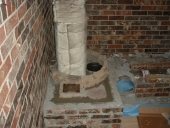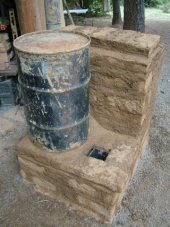





Jared McKee wrote:What is the thickness of the bottom of the cast? From the pictures I am assuming the board was attached to the cast to hold it away from the bottom same thickness all the way around?
Willie Shannon wrote:I like it! Good job!
I'm interested in what you call Cast Refractory Cement, is that something bought from a kiln/refractory supplier? What temps can it handle?
I like that design, I think I could make something like that work for the design I was going for, but how long do you think it would hold up to the temperatures?
Are you going to cast a heat riser from the same stuff?
Bravo!
John Elliott wrote:That looks pretty hot! Are you going to share your recipe for refractory cement with us? And how it holds up for more burns? Inquiring minds want to know.
